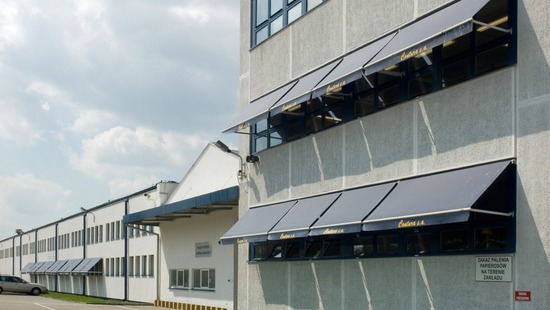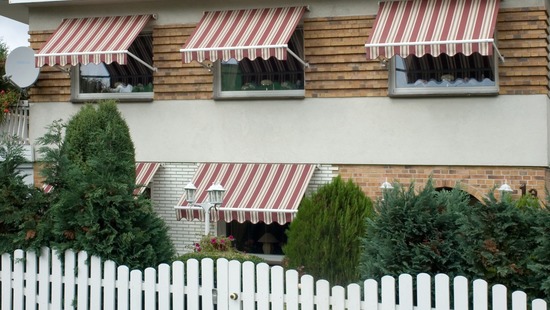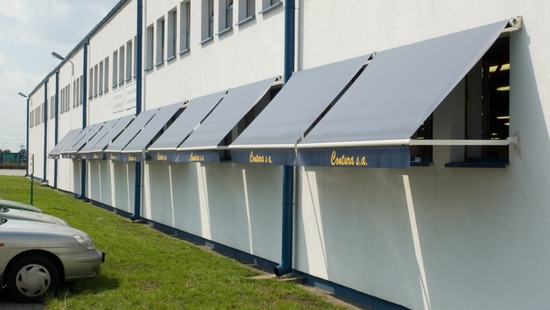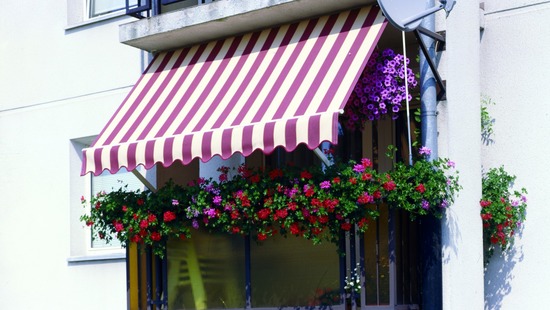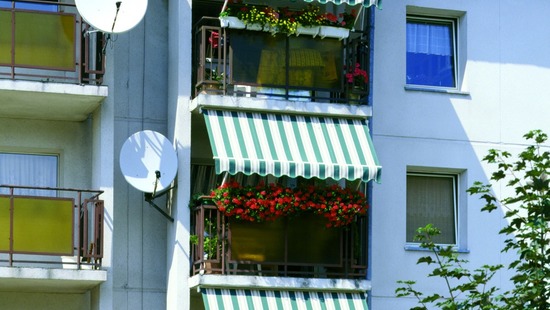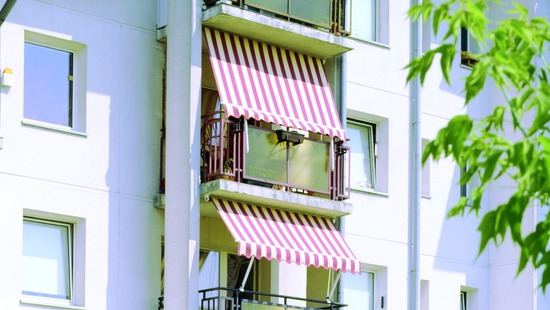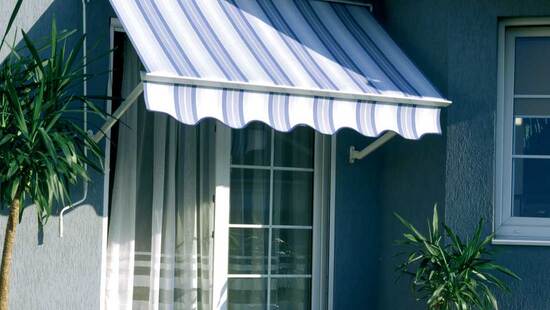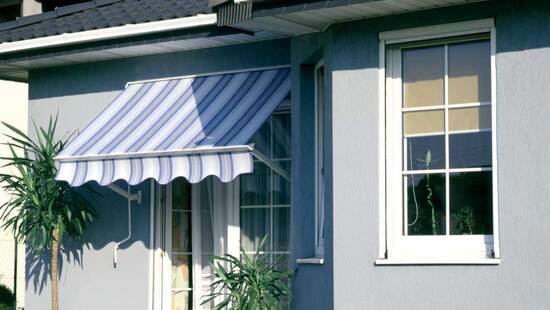ITALIA made to measure balcony awnings are stylish external sunshades, that are mounted above windows and balcony doors.
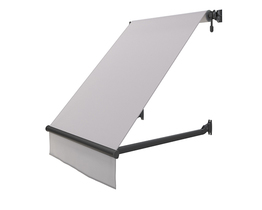
Balcony awning ITALIA without cassette
- extension up to 1.8 m. width up to 5 m.
- Electric drive - YES
- Manual drive - YES
- Cassette - NO
- Optional roof - NO
- Frill - YES
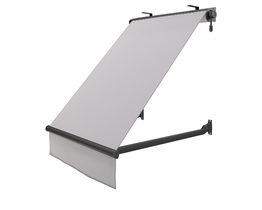
Balcony awning ITALIA with cassette
- projection up to 1.4 m. width up to 5 m.
- Electric drive - YES
- Manual drive - YES
- Cassette - YES
- Optional roof - NO
- Frill - YES
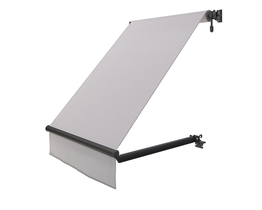
Balcony awning ITALIA handrail
- projection up to 0.7 m. width up to 5 m.
- Electric drive - NO
- Manual drive - YES
- Cassette - NO
- Optional roof - NO
- Frill - YES
Awning for a balcony
Balcony awning represents the epitome of form meeting function, establishing them as one of the most coveted items in the window covering catalog. Crafted from premium, water-resistant and UV-resistant fabrics, these awnings promise both longevity and comfort. Check more:
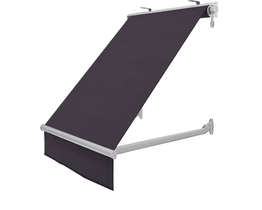
Balcony awnings anthracite
- Knall awning for a balcony
- Made to measure product
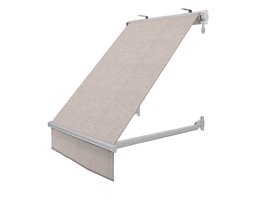
Balcony awnings beige
- Knall awning for a balcony
- Made to measure product
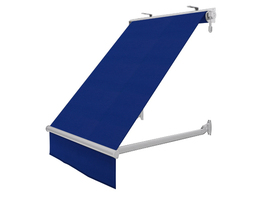
Balcony awnings blue
- Knall awning for a balcony
- Made to measure product
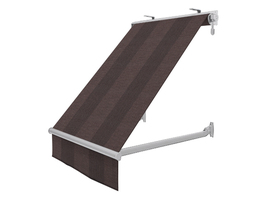
Balcony awnings brown stripes
- Knall awning for a balcony
- Made to measure product
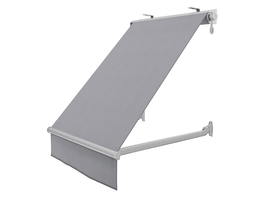
Balcony awnings gray
- Knall awning for a balcony
- Made to measure product
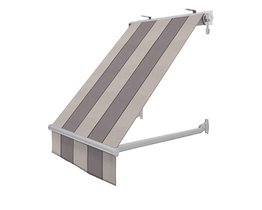
Balcony awnings gray stripes
- Knall awning for a balcony
- Made to measure product
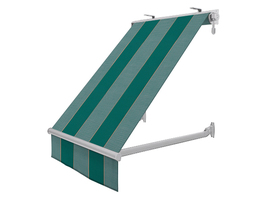
Balcony awnings green stripes
- Knall awning for a balcony
- Made to measure product
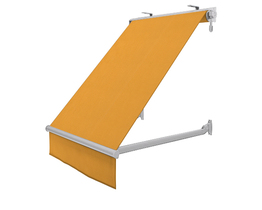
Balcony awnings orange
- Knall awning for a balcony
- Made to measure product
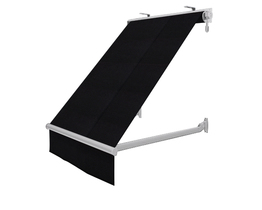
Balcony awnings waterproof black
- Knall awning for a balcony
- Made to measure product
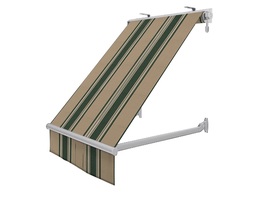
Balcony awnings with colorful green stripes
- Knall awning for a balcony
- Made to measure product
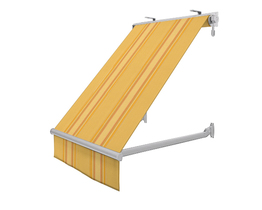
Balcony awnings yellow stripes
- Knall awning for a balcony
- Made to measure product
Balcony awnings
The Comprehensive Guide to Balcony Awnings: Enhancing Your Outdoor Space
When it comes to maximizing the potential of your balcony, one of the most effective ways to do so is by installing a high-quality awning. Quality retractable Balcony awnings not only provide shade and protection from the elements, but they also add a touch of style and elegance to your outdoor space. In this comprehensive guide, we will explore the various types of awnings available, their benefits, and how to choose the perfect one for your balcony.
There are several types of awnings to consider for your balcony, each with its own unique features and benefits. Some popular options include:
- Retractable awnings: These awnings can be extended or retracted as needed, providing flexibility in terms of shade and coverage. They are ideal for those who want to enjoy both sun and shade on their balcony.
- Fixed awnings: As the name suggests, these awnings are permanently attached to your balcony and provide constant shade and protection. They are a great option for those who want a more permanent solution.
- Freestanding awnings: These awnings are not attached to your balcony but instead stand on their own. They can be moved around as needed, making them a versatile option for those who want flexibility in their outdoor space.
When choosing the perfect awning for your balcony, there are several factors to consider. Some of these include:
- Size and shape of your balcony: The dimensions of your balcony will play a significant role in determining the type and size of awning that will work best for your space. Make sure to measure your balcony accurately before making a decision.
- Material: Awnings come in various materials, such as fabric, metal, and wood. Each material has its own advantages and disadvantages, so it's essential to choose one that suits your needs and preferences.
- Style and design: Awnings are available in a wide range of styles and designs, from traditional to modern. Consider the overall aesthetic of your home and balcony when selecting an awning that complements your space.
- Budget: Awnings can vary significantly in price, so it's important to establish a budget before shopping around. Keep in mind that investing in a high-quality awning can save you money in the long run by providing better durability and protection.
In conclusion, a well-chosen balcony awning can greatly enhance your outdoor space by providing shade, protection, and style. By considering factors such as the size and shape of your balcony, the material, style, and design of the awning, and your budget, you can find the perfect awning to transform your balcony into a comfortable and inviting oasis.

Understanding the Basics of Balcony Awnings
In this section, we will delve into the fundamentals of balcony awnings, exploring their purpose and basic structure. By understanding these aspects, you will be better equipped to choose the perfect awning for your balcony.
Defining balcony awnings: A brief overview
Balcony awnings, also known as balcony canopies, are coverings designed to provide shade and protection from the elements for your outdoor space. They are typically made from durable materials such as fabric, metal, or wood and are available in various styles and designs. Balcony awnings can be fixed, retractable, or freestanding, depending on your preferences and the specific requirements of your balcony.
The role of balcony awnings in sun and weather protection
One of the primary purposes of balcony awnings is to provide protection from the sun and other weather elements. By offering shade, awnings help to create a comfortable outdoor space, allowing you to enjoy your balcony even during hot summer days or light rain. Additionally, they can help to protect your outdoor furniture and décor from fading and damage caused by prolonged exposure to sunlight and other weather conditions.
The aesthetic appeal of balcony awnings: More than just functional
Beyond their practical benefits, balcony awnings also serve as an attractive addition to your outdoor space. With a wide range of styles, colors, and designs available, you can choose an awning that complements the overall aesthetic of your home and enhances the visual appeal of your balcony. Whether you prefer a traditional, modern, or eclectic look, there is a balcony awning that will suit your taste and elevate the appearance of your outdoor space.
In summary, balcony awnings are a versatile and valuable addition to any outdoor space. They provide essential sun and weather protection while also adding an element of style and elegance to your balcony. By understanding the basics of balcony awnings, you can make an informed decision when selecting the perfect awning for your needs.
Different Types of Balcony Awnings
In this section, we will explore the various types of balcony awnings available, comparing and contrasting their features, and discussing the pros and cons of each. This information will help you make an informed decision when selecting the perfect awning for your balcony.
Exploring the variety: From full cassette to non-cassette awnings
There are three main types of retractable awnings: full cassette, open cassette, and non-cassette awnings. Full cassette awnings are fully enclosed when retracted, providing maximum protection for the fabric and mechanism. Open cassette awnings, on the other hand, have a partial enclosure, leaving some parts exposed when retracted. Non-cassette awnings do not have any enclosure, leaving the fabric and mechanism completely exposed when retracted.
Full cassette awnings offer the best protection against weather elements and are ideal for long-term durability. However, they tend to be more expensive than open cassette and non-cassette awnings. Open cassette awnings provide a balance between protection and cost, while non-cassette awnings are the most affordable option but offer the least protection for the fabric and mechanism.
Manual vs. motorised electric awnings: Which one to choose?
When it comes to operation, balcony awnings can be either manual or motorised electric. Manual awnings require physical effort to open and close, usually using a hand crank or a pull cord. Motorised electric awnings, on the other hand, are operated with a remote control or a wall switch, making them more convenient and user-friendly.
Manual awnings are generally more affordable and require less maintenance, as there are fewer mechanical parts that can malfunction. However, they can be more labor-intensive to operate, especially for larger awnings. Motorised electric awnings offer ease of use and can be integrated with smart home systems, but they tend to be more expensive and may require professional installation and maintenance.
The charm of traditional Victorian retractable awnings
Traditional Victorian retractable awnings are a classic and elegant option for those who appreciate a vintage aesthetic. These awnings feature a timeless design, often with decorative elements such as ornate cast iron brackets and scalloped valances. Victorian awnings are typically manually operated, using a rope and pulley system to retract and extend the awning.
While Victorian awnings can add a touch of charm and sophistication to your balcony, they may not be as practical or durable as modern awning options. Additionally, they can be more challenging to find and may require custom fabrication, which can be more expensive than other awning types.
High-performance awnings: A look at premium and high-grade options
For those seeking top-of-the-line awning options, high-performance awnings and premium cassette awnings offer superior quality, durability, and functionality. These awnings often feature advanced materials, such as UV-resistant fabrics and corrosion-resistant hardware, ensuring long-lasting performance and minimal maintenance.
High-performance awnings may also include additional features, such as integrated lighting, heating, or wind and sun sensors that automatically adjust the awning based on weather conditions. While these premium options come with a higher price tag, they provide an unmatched level of convenience, comfort, and longevity for your balcony space.
In conclusion, there is a wide variety of balcony awnings available, each with its own unique features, benefits, and drawbacks. By understanding the differences between full cassette, open cassette, non-cassette, manual, motorised electric, traditional Victorian, and high-performance awnings, you can make an informed decision and choose the perfect awning for your balcony.
Key Features and Characteristics of Balcony Awnings
In this section, we will delve into the main features and characteristics of balcony awnings, focusing on their functionality, fabric, and the role of articulated and drop arms. We will also discuss the benefits of electric and motorised awnings for added convenience.
Understanding the functionality of retractable balcony awnings
Retractable balcony awnings are designed to provide shade and protection from the elements while being easily adjustable to suit your needs. They typically consist of a fabric cover attached to a metal frame, which can be extended or retracted using a manual or motorised mechanism. When extended, the awning fabric is stretched over the frame, creating a shaded area beneath. When retracted, the fabric is rolled or folded back, allowing for unobstructed views and sunlight.
The importance of awning fabric in weather protection
The fabric used in balcony awnings plays a crucial role in their effectiveness as weather protection products. High-quality awning fabrics are typically made from durable materials such as acrylic, polyester, or PVC-coated textiles. These fabrics are designed to be water-resistant, UV-resistant, and fade-resistant, ensuring long-lasting performance and protection from the elements.
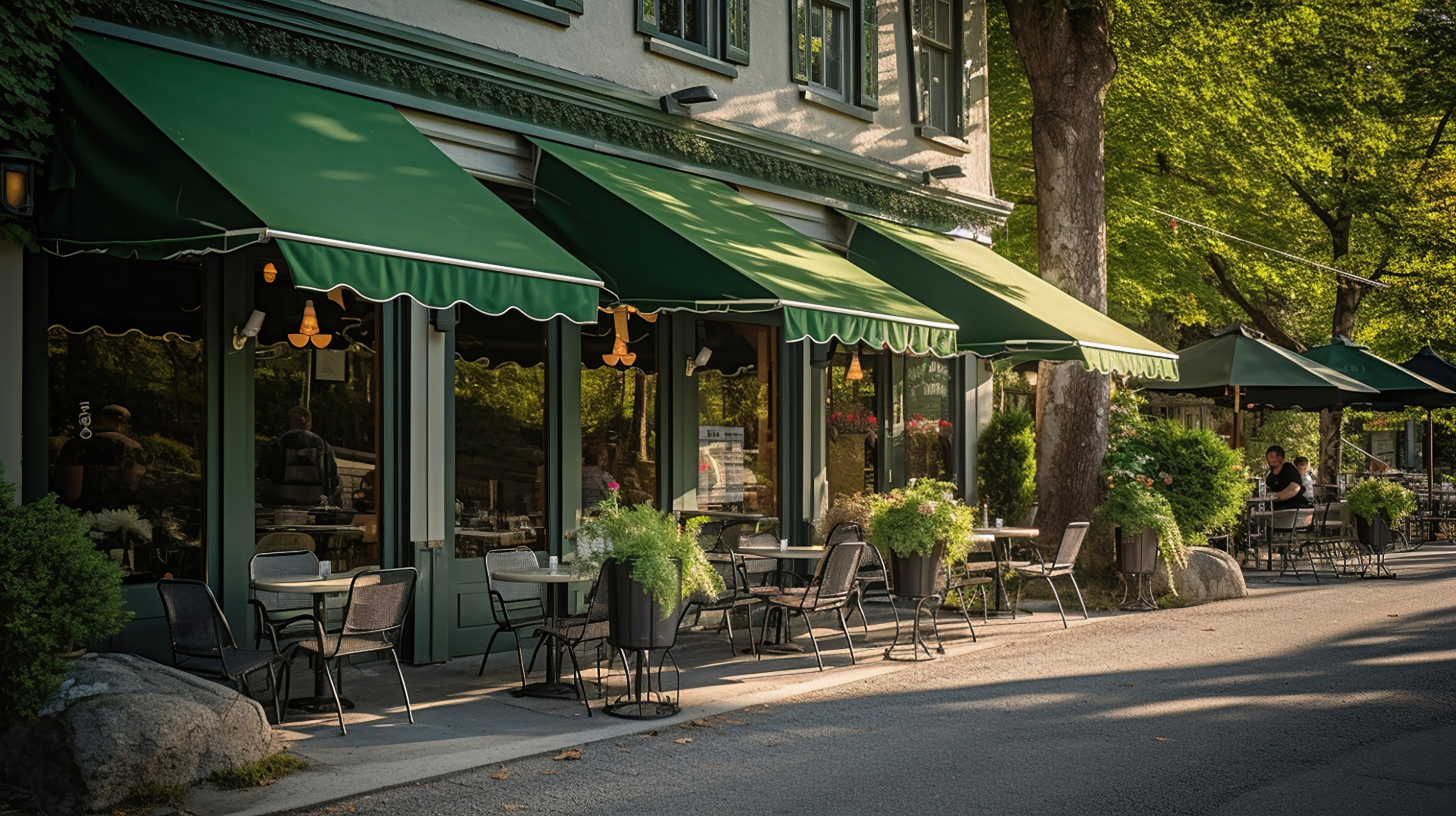
When selecting an awning fabric, it is essential to consider factors such as colourfastness, water resistance, and UV protection. A fabric with a high colourfastness rating will retain its colour and appearance over time, while fabrics with excellent water resistance and UV protection will provide better protection from rain and harmful sun rays.
The role of articulated and drop arm in awnings
Articulated arm awnings and drop arm awnings are two common types of balcony awnings that differ in their support mechanisms. Articulated arm awnings use a folding arm mechanism to extend and retract the awning fabric. These arms are typically spring-loaded, providing tension to keep the fabric taut when extended. This design allows for a larger projection and more extensive coverage area, making articulated arm awnings ideal for spacious balconies.
Drop arm awnings, on the other hand, use a pivoting arm mechanism to extend and retract the awning fabric. The arms are attached to the awning's frame and pivot at a fixed point, allowing the fabric to be angled downwards when extended. This design provides a smaller projection and coverage area, making drop arm awnings more suitable for smaller balconies or windows.
The convenience of electric and motorised awnings
Electric and motorised awnings offer several benefits over manual awnings, providing added convenience and ease of use. With a motorised awning, you can effortlessly extend or retract the awning using a remote control or wall switch, eliminating the need for manual cranking or pulling. This feature is particularly beneficial for larger awnings, which can be more challenging to operate manually.
Additionally, electric awnings can be integrated with smart home systems, allowing for automated operation based on weather conditions or preset schedules. For example, an awning can be programmed to extend automatically when the sun reaches a certain intensity or retract when the wind speed exceeds a specific threshold. This automation not only enhances convenience but also helps protect your awning from potential damage due to adverse weather conditions.
Choosing the Perfect Balcony Awning for Your Home
With a wide variety of balcony awnings available on the market, it can be challenging to choose the perfect one for your home. In this section, we will discuss factors to consider when buying balcony awnings online, provide a step-by-step guide on fitting balcony awnings, explore the appeal of penthouse balcony awnings, and compare balcony covers and awnings to help you make an informed decision.
Factors to consider when buying balcony awnings online
When purchasing balcony awnings online, it is essential to consider the following factors:
- Size and dimensions: Measure your balcony accurately to ensure the awning you choose will fit properly and provide adequate coverage.
- Material: Opt for high-quality, durable materials such as acrylic, polyester, or PVC-coated textiles that offer water resistance, UV protection, and fade resistance.
- Mechanism: Choose between manual, electric, or motorised awnings based on your preferences and budget.
- Style and design: Select an awning that complements your home's exterior and matches your personal taste.
- Installation: Ensure the awning can be easily installed, either by yourself or with professional assistance.
- Warranty and customer support: Look for awnings with a good warranty and responsive customer support to address any issues that may arise.
How to fit balcony awnings: A step-by-step guide
Installing a balcony awning can be a straightforward process if you follow these steps:
- Prepare the area: Clear the balcony and ensure there is enough space to work safely.
- Measure and mark: Measure the awning's dimensions and mark the installation points on the wall or ceiling, ensuring they are level and evenly spaced.
- Drill holes: Using a power drill, create holes at the marked points for the awning brackets.
- Attach brackets: Secure the awning brackets to the wall or ceiling using appropriate screws and wall plugs.
- Mount the awning: With the help of another person, lift the awning onto the brackets and secure it in place using the provided hardware.
- Test the awning: Extend and retract the awning to ensure it operates smoothly and provides the desired coverage.
The appeal of a penthouse balcony awning: Is it for you?
A penthouse balcony awning can add a touch of luxury and sophistication to your outdoor living space. These awnings are typically larger and more robust, providing ample shade and protection from the elements. They may also feature motorised or automated mechanisms for added convenience. If you have a spacious balcony and are looking for a high-end awning solution, a penthouse balcony awning may be the perfect choice for you.
Balcony covers vs. awnings: Making the right choice
When deciding between a balcony cover and an awning, consider the following factors:
Feature Balcony Cover Awning Flexibility Fixed structure, offering constant shade and protection Retractable, allowing for adjustable shade and protection Installation May require professional installation and building permits Typically easier to install, with fewer restrictions Appearance Permanent addition to your home's exterior Less intrusive, can be retracted when not in use Cost Can be more expensive due to materials and installation Generally more affordable, with a range of options available
Ultimately, the choice between a balcony cover and an awning will depend on your specific needs, preferences, and budget. Consider the factors above to determine which option is best suited for your home.
Maintaining Your Balcony Awning: Tips and Tricks
Proper maintenance and care of your balcony awning can significantly prolong its lifespan and keep it looking fresh and functional. In this section, we will discuss the importance of awning storage bags and proper awning care, provide instructions on how to clean awnings using awning cleaner, and share tips on how to prolong the lifespan of awnings, including the use of waterproof fabrics.
The importance of awning storage bags and proper care
Awning storage bags play a crucial role in protecting your awning from dirt, dust, and damage when not in use. These bags are designed to keep your awning clean and safe from the elements, ensuring its longevity. Additionally, proper care of your awning is essential to maintain its appearance and functionality. This includes regular cleaning, inspection for damage, and timely repairs if needed. By investing in a high-quality storage bag and following proper care guidelines, you can significantly extend the life of your awning.
How to clean your awning: A guide to using awning cleaner
Regular cleaning of your awning is essential to prevent the buildup of dirt, mold, and mildew. Follow these steps to clean your awning using an awning cleaner:
- Prepare the area: Ensure the awning is fully extended and secure any loose items in the vicinity.
- Remove loose debris: Use a soft brush or broom to gently remove any loose dirt, leaves, or debris from the awning fabric.
- Apply awning cleaner: Spray the awning cleaner evenly onto the fabric, following the manufacturer's instructions for dilution and application.
- Scrub the fabric: Use a soft brush or sponge to gently scrub the fabric, focusing on any stained or heavily soiled areas.
- Rinse thoroughly: Use a garden hose or bucket of water to rinse the awning fabric, ensuring all cleaner residue is removed.
- Allow to dry: Leave the awning fully extended to air dry before retracting or storing it.
It is recommended to clean your awning at least twice a year or more frequently if it is exposed to harsh environmental conditions.
Ensuring the longevity of your awning: Waterproof fabrics and more
There are several ways to prolong the lifespan of your awning, including the use of waterproof fabrics and proper maintenance. Here are some tips to help you ensure the longevity of your awning:
- Choose waterproof fabrics: Opt for awning materials that are water-resistant, UV-protected, and fade-resistant, such as acrylic, polyester, or PVC-coated textiles. These fabrics will better withstand the elements and maintain their appearance over time.
- Regular inspections: Periodically inspect your awning for signs of wear, tear, or damage. Address any issues promptly to prevent further deterioration.
- Lubricate moving parts: Keep the awning mechanism well-lubricated to ensure smooth operation and prevent rust or corrosion.
- Store properly: When not in use, store your awning in a protective storage bag to shield it from dirt, dust, and damage.
- Follow manufacturer guidelines: Adhere to the manufacturer's recommendations for cleaning, maintenance, and care to maximize the lifespan of your awning.
By following these tips and investing in high-quality materials and proper care, you can enjoy your balcony awning for many years to come.
Expanding Your Outdoor Space: Beyond Balcony Awnings
While balcony awnings are a popular choice for expanding outdoor spaces, there are other options available that can provide sun protection, privacy, and additional functionality. In this section, we will explore alternative sun protection systems, such as pergola awnings and glass canopies, discuss the role of weather sensors in modern sun shading systems, and examine how windbreak or privacy screens can complement awnings for added privacy.
Exploring other sun protection systems: Pergolas, glass canopies, and more
Pergola awnings are a versatile option for creating shaded outdoor spaces. These structures consist of a series of vertical posts or pillars supporting a lattice or slatted roof, which can be covered with fabric or left open to allow sunlight to filter through. Pergola awnings can be freestanding or attached to a building, and they can be customized with various materials, colors, and designs to suit your outdoor space.
Glass canopies offer a sleek and modern alternative to traditional awnings. These structures consist of a glass panel supported by metal or wooden beams, providing protection from the sun and rain while allowing natural light to pass through. Glass canopies can be installed over doors, windows, or patios, and they can be customized with various glass types, such as tinted or frosted glass, to control the amount of sunlight and privacy.
The role of weather sensors in modern sun shading systems
Weather sensors play a crucial role in enhancing the functionality and convenience of modern sun shading systems. These sensors can detect changes in sunlight, wind, and rain, and automatically adjust the shading system accordingly. For example, a sun sensor can detect when the sunlight reaches a certain intensity and automatically extend the awning or adjust the pergola slats to provide optimal shade. Similarly, a wind sensor can detect strong gusts and automatically retract the awning to prevent damage. By incorporating weather sensors into your sun shading system, you can ensure optimal comfort and protection, while also prolonging the lifespan of your outdoor shading solution.
Creating privacy with windbreak screens: A complementary solution
Windbreak or privacy screens can be an excellent addition to your outdoor space, providing both protection from the elements and increased privacy. These screens can be made from various materials, such as fabric, wood, or metal, and can be installed alongside awnings, pergolas, or glass canopies to create a more secluded and comfortable outdoor area. Some popular options for windbreak screens include:
- Retractable side screens: These screens can be extended or retracted as needed, providing flexible privacy and wind protection.
- Fixed privacy panels: These panels can be installed permanently or semi-permanently, offering a more robust and durable solution.
- Freestanding screens: These screens can be easily moved and repositioned, allowing for versatile privacy and wind protection.
By combining different sun protection systems and privacy solutions, you can create a functional and inviting outdoor space that suits your specific needs and preferences.
Summary
In this article, we discussed various options for expanding your outdoor space beyond balcony awnings, including pergola awnings and glass canopies as alternative sun protection systems. We also highlighted the importance of weather sensors in modern sun shading systems, which can automatically adjust the shading system based on sunlight, wind, and rain conditions. Additionally, we explored the use of windbreak or privacy screens as a complementary solution to awnings, offering increased privacy and protection from the elements. By combining different sun protection systems and privacy solutions, you can create a functional and inviting outdoor space tailored to your specific needs and preferences.
Types
Balcony awnings in the Knall store are offered in four product groups:
- Italia without a cassette. The awning blind has a simple structure, not equipped with a cassette, into which the material is hidden after being rolled up. Includes universal brackets for wall and ceiling mounting (balcony above). Possibility of electric control - motors protected by IP 44 casing, which means protection against water splashes on the casing from various directions (driving rain). Equipped with automatics with wind and shock sensors.
- Italia in cassette. The awning of a simple structure, equipped with universal brackets ensuring easy mounting to a wall or ceiling (balcony above). Electrically controllable, the motor of which is protected by an IP 44 rainproof housing. Equipped with automatics with wind and shock sensors.
- Railing Italia. Characteristic for this model are the arms fixed to the balcony railing; the structure allows to set the appropriate tilt angle. Electric drive cannot be used here.
- BORA. The BORA awning is installed vertically in relation to the window plane. Equipped with a spring drive, without the possibility of using an electric drive.
The material of the balcony awnings is covered with a special impregnation that prevents dirt and dust from settling on the fabric while the awning is open. The color palette includes smooth materials and covered with stripes in various colors, characteristic for awnings. Thus, the product can be easily adapted to the character of the building and the color of the facade. At the end of the awning there is a decorative frill.
Additional information
How to measure
Before ordering a balcony awning, you can do the measurement yourself, the relevant instructions are available at the linkmeasuring. An ordered awning is a guarantee of effective protection of the entire balcony space.
How to choose a color
The colors of balcony awnings are smooth colors or material decorated with stripes, which are clearly associated with balconies in cities located in the south of Europe. The whole thing should be adapted to the color of the facade, so that it creates an aesthetic whole with it.
How to assemble
The assembly of the balcony awning can be done independently. The instructions for this can be found hereassembly instructions.However, if someone does not feel confident in such works, it is best to entrust the installation of the awning to specialists.
How to clean
In order for the balcony awning to retain its aesthetic appearance, dirt can be regularly removed with a brush on a long stick. You can also disassemble the fabric from time to time and clean it wet with a damp sponge. The material must be unfolded to dry completely.
